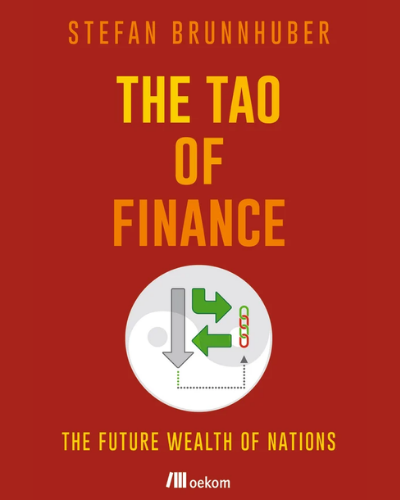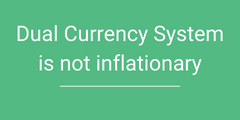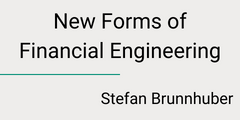Generating the trillions of dollars in additional financing required to fulfill the 17 sustainable development goals and avoid radical climate change is one of the greatest challenges confronting global society today. Commitments of national governments and projected private sector financial institutions are likely to be grossly inadequate. This WAAS project examines the feasibility of introducing a digital parallel currency mechanism for sustainable financing of our common future and in particular, the United Nations Sustainable Development Goals.
Development needs have primarily been financed through private sector financing, conventional public sector funding and philanthropic commitment. These traditional sources are not sufficient in scale and speed to meet the pressing finance needs. The world community is too busy repairing, stabilizing and refunding the given to maintain the stability of the existing system, relying on a mechanical model.
Out-of-the-box approaches which blend in with the given tools, providing new financial engineering are required. The introduction of a parallel electronic currency specifically designed to finance global commons and human-centered economy would provide a systemic non-linear and complex approach to create the necessary resources to achieve the UN SDGs and addressing asymmetric shocks (COVID-19, among others), while stabilizing the existing monetary system.
In over 150 panels, conferences, background discussions and experts hearings, we have been exploring the question on ‘How to finance our common future? and How to generate the 5 Trillion USD annually over the next 20 years to finance our global commons?’ Currently multiple domestic road shows are in the making to address governmental officials and academics to refine the argument and to identify possibilities to implement our findings.
The development of cryptocurrencies based on blockchain distributed ledger technologies has prompted leading central banks and other agencies around the world to study the potential application of this approach to directly inject purchasing power without dependence on the banking system.
This is the “game changer”. All this can be started in less than 6 months, if the 6 largest Central Banks agreed to create a parallel, optional complementary currency, to allow to generate the 5-6 trillion USD necessary annually to finance our future. An international expert group of WAAS is exploring the possibilities with IGO (UN; WB), the corporate world (Banking, Insurance), regulators and central-bankers as well as politicians all over the world to make this happen.
Whereas most changes in history took place unconsciously, we are now in a situation to refer to scientific information and data and apply that knowledge and wisdom in order to take charge of this process intentionally and consciously, steering our society towards higher values, increased wealth and greater sustainability. This is the primary goal of the Tao of Finance initiative and Stefan Brunnhuber, Program Director of the WAAS Expert Group on Innovative Financial Strategies.
Reports
– Selection – contact brunnhuber.cor@gmxpro.de for more
These books describe a parallel optional currency system operating through distributive ledger technology to sustainably finance our common future and in particular, the UN SDGs. To implement this new financial mechanism, the collective Western mind-set must gravitate towards Eastern thinking, namely Taoism.
Featured Events
– Selection – contact brunnhuber.cor@gmxpro.de for more
RIO+30 – History and Future
At the Global Goals Forum, Dr. Brunnhuber highlights the lack of progress in addressing environmental and social challenges, urging for urgent change. We need to adjust the monetary and financial system to meet the sustainable development goals, a requirement of $5 trillion. He advocates decentralized circular economy, resource efficiency, regenerative agriculture. Read More
ESG – Taxonomy and Stress-tests
To achieve an environmentally focused society and economy, we must address the financial system’s structure and biases. Current taxonomies for ESG criteria are costly and limited. We need a comprehensive taxonomy and smart financial tools to manage uncertainties and share responsibilities between public and private sectors.
TAO of finance

In this intergenerational dialogue, Stefan Brunnhuber addressed the need for the introduction of a parallel electronic currency specifically designed to finance global commons, and a human centered economy that would provide the necessary resources to achieve the UN SDGs while stabilizing the existing monetary system. Read More
Financing the Future
The development of cryptocurrencies based on blockchain distributed ledger technologies has prompted leading central banks around the world to study the potential application of this approach to directly inject purchasing power without dependence on the banking system.
How to finance our SDGs
The Sustainable Development Goals are expensive to achieve and require a financial investment of approximately 5 trillion USD/year over the next 15-20 years. Private sector financing, conventional public sector funding and philanthropic commitment are not sufficient in scale and speed to meet the pressing financial needs.
Published Articles
– Selection – contact brunnhuber.cor@gmxpro.de for more
Background articles and spin-offs
– Selection – contact brunnhuber.cor@gmxpro.de for more
Appointed Member of the federal board on ‘Sustainable Finance’ of the German Government 2022
“Money and Sustainability” lecture series of the “TAO of Finance” initiative of the World Academy of Art and Science on how to finance our Anthropocene – a 12 lecture-series‘ 2023
Policy Brief 22/01: Financing Our Future, Stefan Brunnhuber, 2022
The TAO of Finance (Graphs and tables), Stefan Brunnhuber, 2021
The Planetary Momentum, UN Global Goals Yearbook, Partnerships for the Goals 2020, pp: 17-21
‘The TAO of Finance’ with Dr. Mariana Bozesan, Stefan Brunnhuber, 2019
The Curse of the Carbon Bubble: How to Really Exit the Fossil Age?, UN Global Goals Yearbook, Partnerships for the Goals 2019, pp: 42-51
The “Real” Tragedy of the Commons: Can a dual Currency System Achieve a Pareto-Superior Equilibrium?, Stefan Brunnhuber, 2018
How can Psychology Help Mankind to Overcome its Greatest Challenges?, Stefan Brunnhuber, 2018
How can Blockchain technology help us to finance SDGs?, UN Global Goals Yearbook, Partnerships for the Goals 2018, pp: 54-57
Ending Poverty & Hunger for Amina Mwele, Science Slam, Stefan Brunnhuber, 2018
Financing the Future: An Argument for a Parallel Optional Currency, Stefan Brunnhuber, 2017
The Real Tragedy of the Commons or How To Really Finance our Future, Stefan Brunnhuber, 2017
Podcast
– Selection – contact brunnhuber.cor@gmxpro.de for more
Towards a new, green Bretton Woods: How and why an upgraded financial system will change the world | Feb 2023
The Next Big Thing: A monetary inflation brake to tackle with imported energy and food prize inflation | July 2022
Tomorrow Is Now: Financing, hedging, funding and managing our common health – WHO as a case study















